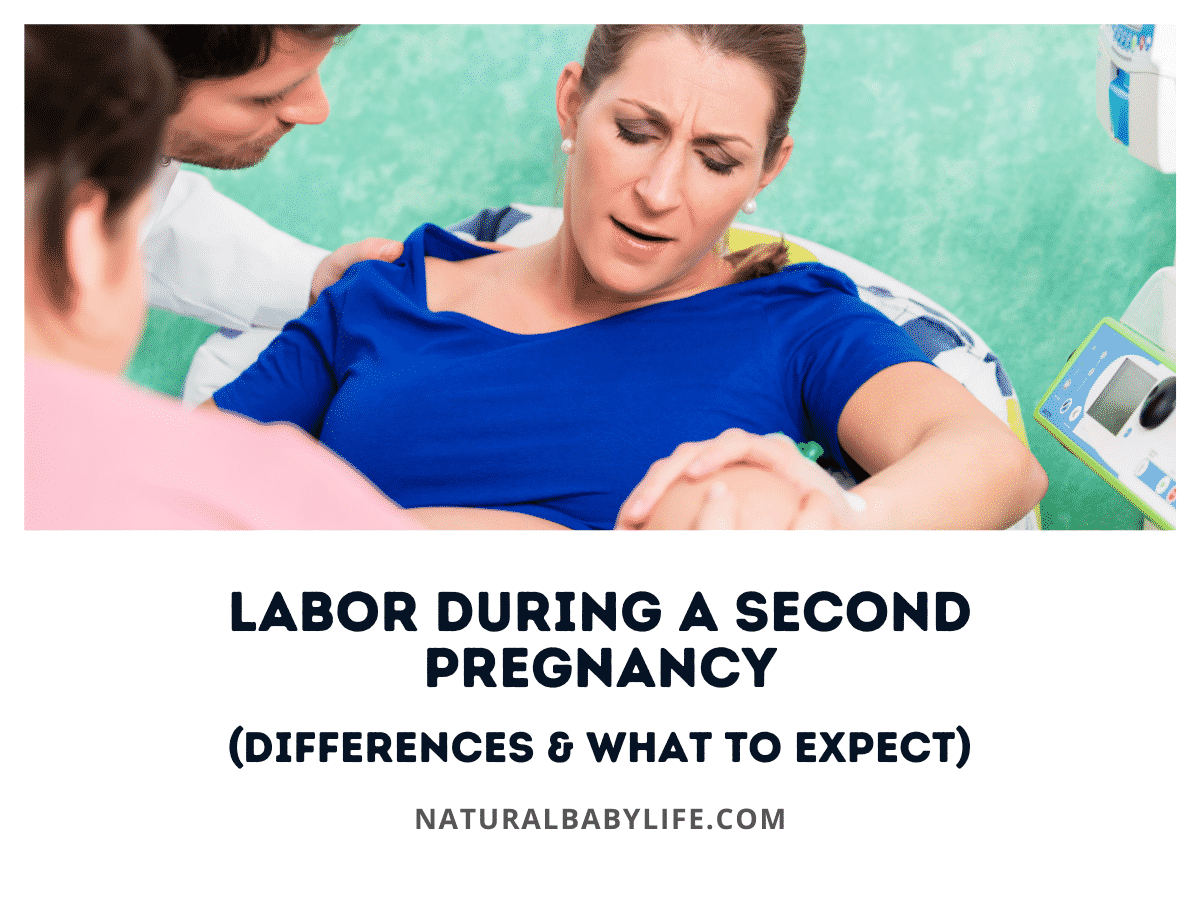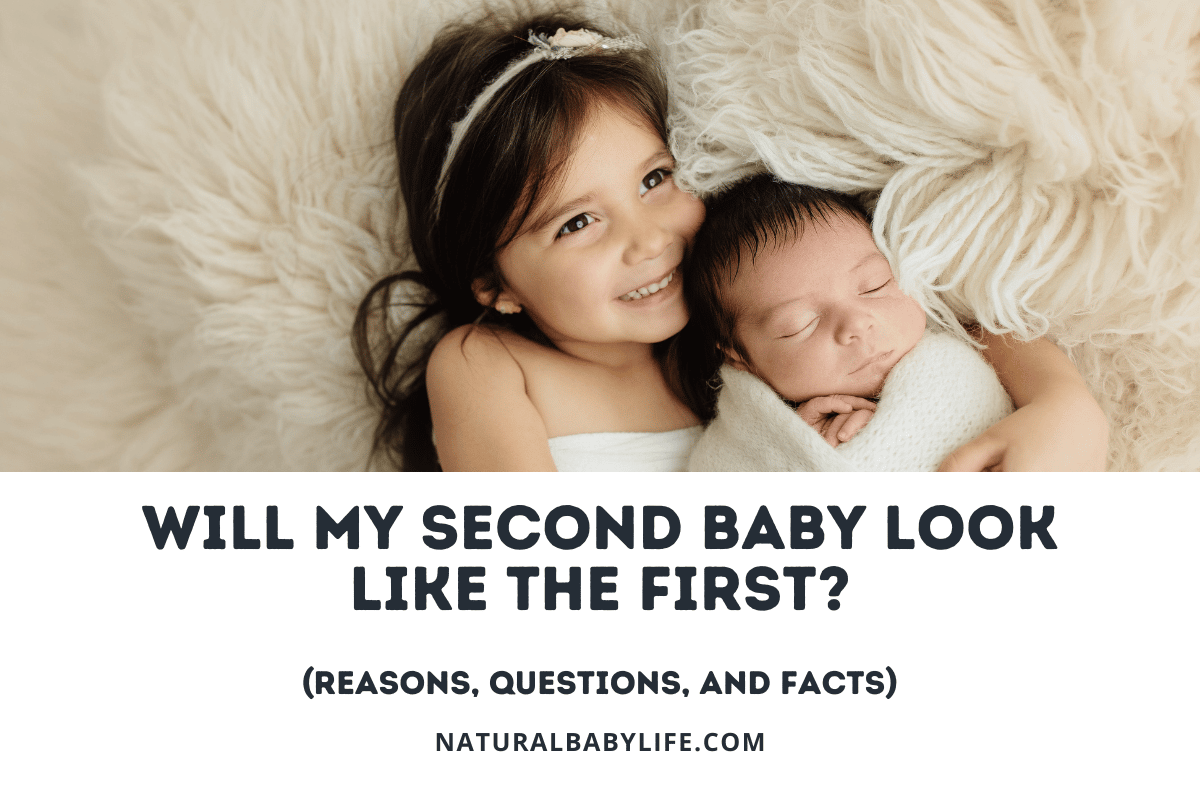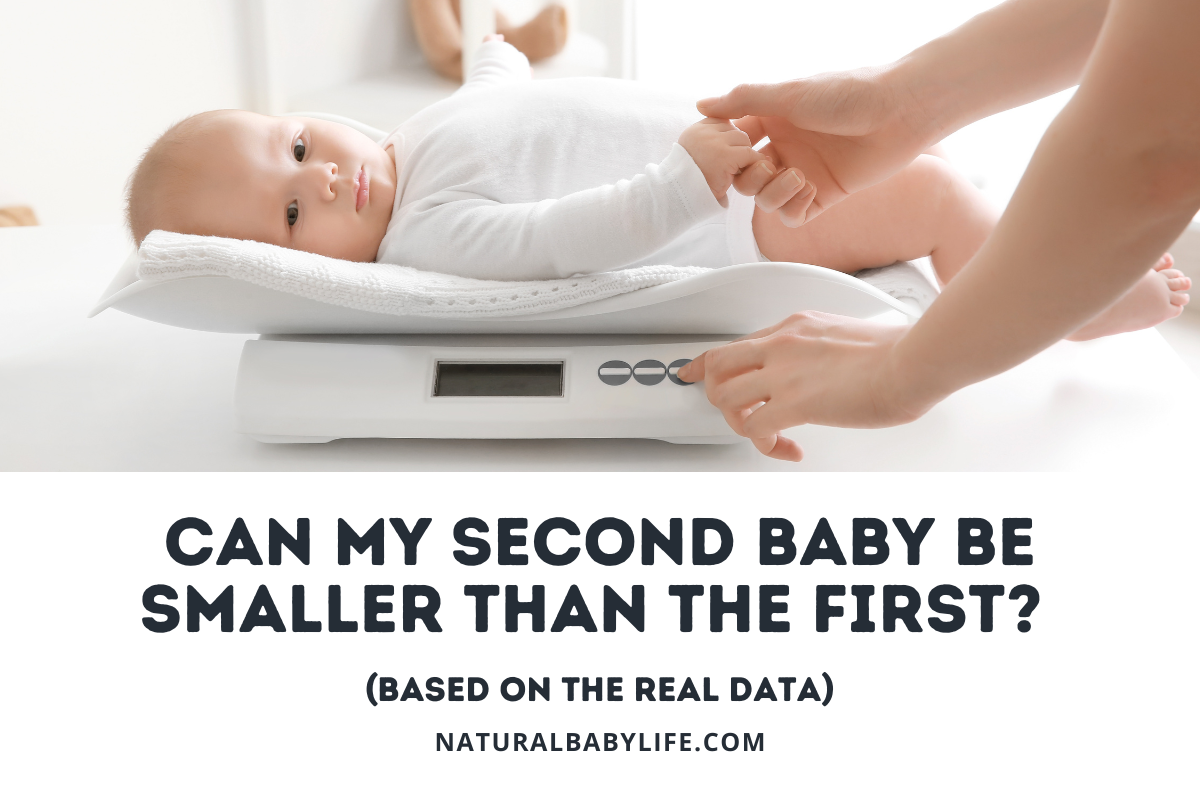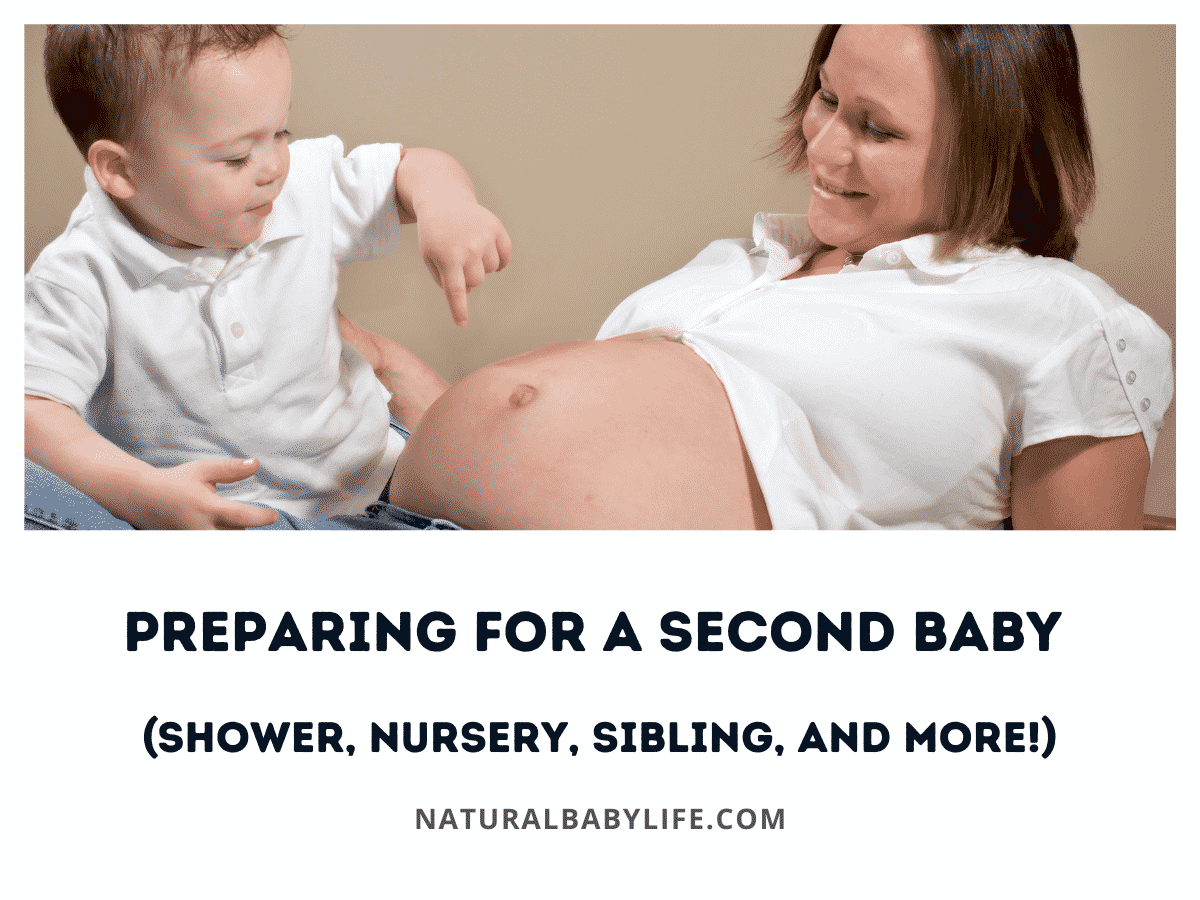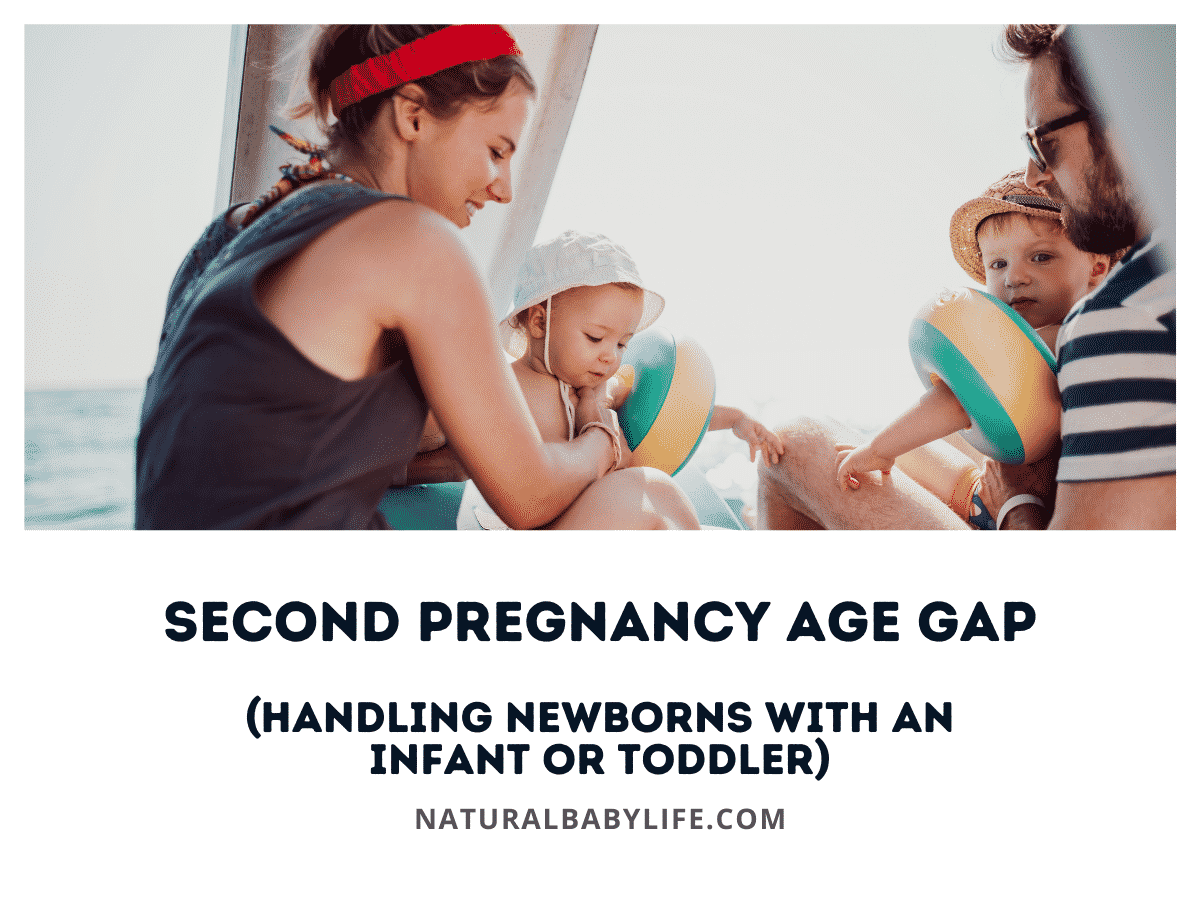Nothing compares to the excitement of being able to finally meet your little one after nine months of pregnancy; however, labor and delivery is no walk in the park. Many mothers experience anxiety about the pain and unpredictability of childbirth, but is labor different for second-time mothers?
For most second-time mothers, labor tends to be shorter in duration, and many women report having an easier time coping. Aspects of a mother’s second labor, such as gestational age at delivery and delivery method, are statistically connected to their first labor experience; however, every pregnancy is unique and largely unpredictable.
Keep reading to learn more about how labor during your second pregnancy may be similar to or differ from labor during your first pregnancy.
Table of Contents
Does labor start earlier with the second pregnancy?
Only about 4 percent of babies are born on their due date, and first-time babies are even less likely to be on time. Though it may sound oxymoronic, first-time babies are actually more likely to be both early and late.
Your second pregnancy labor may be more likely to occur closer to your due date than with your first pregnancy. Reasons for this are unclear but may be due to the fact that your body has already responded to labor hormones and experienced labor.
Assessing data from the National Survey of Family Growth (NSFG), Professor Allen Downey found the following:
Likelihood of pre-term and post-term birth
| First-time births | Subsequent births | |
|---|---|---|
| Born Preterm (before 37 weeks) | 12% | 10% |
| Born Late (after 40 weeks) | 15% | 10% |
Inductions and scheduled deliveries may also affect these statistics.
Second baby labor statistics
Every pregnancy is different, but, statistically, there are some differences between first-time pregnancy labor and subsequent pregnancy labor experiences. In addition, your first labor experience may influence or help predict aspects of your second labor.
Differences between your first and second labors may include:
- Delivery method
- Gestational age at delivery
- Risk factors
- Labor duration
- Baby size
According to Pregnancy Birth & Beyond (PBB), your labor and delivery experience from your first pregnancy may influence or provide insight into how your labor will go in your second pregnancy.
First birth delivery method's affect on second delivery
| First delivery method | Second delivery statistics |
|---|---|
| Vaginal birth | 96% chance of having a normal vaginal delivery <2% chance of having a cesarean section |
| Forceps delivery | >80% chance of having a normal vaginal delivery |
| Vacuum extraction | >91% chance of having a normal vaginal delivery |
| Cesarean section | 80% chance of having a vaginal delivery 20% chance of having another cesarean section |
According to a study published in Obstetrics and Gynecology, women who experienced preterm or early term birth had a higher chance of going into labor early in their second pregnancy. The reasons for this are not well understood but may be due to genetics, environmental influences, and behavioral risk factors.
The interval between your first and second pregnancy can influence risk factors during labor. Becoming pregnant with your second child within six months of your first child’s birth can increase the likelihood of adverse events such as premature labor and placental abruption.
Labor tends to be shorter during second-time pregnancies than in first-time pregnancies. According to C&G Baby Club, in a first-time pregnancy, dilation occurs at a rate of 1.2 centimeters per hour, while in subsequent pregnancies, dilation occurs at a rate of 1.5 centimeters per hour.
A study published in the International Journal of Environmental Research and Public Health found that second-born babies on average weighed 89 grams more than first-born babies. This difference in weight may be due to gestational age, delivery term, number of prenatal visits, gender of baby, or behavior factors.
Second baby labor signs
Signs that you are nearing labor during your second pregnancy are the same as your first; however, many expecting mothers are able to interpret signs of labor more easily during second (and subsequent) pregnancies.
Along with knowing the signs of labor, distinguishing between true and false labor can be easier for second-time mothers. False labor pains are known as Braxton-Hicks contractions. Unlike real contractions, Braxton-Hicks contractions do not advance labor. Instead, they are the body’s way of preparing for true labor. These contractions are easier to differentiate between once you’ve felt true labor contractions; additional ways to distinguish between the two include:
True Labor vs. Braxton-Hicks Contractions
True Labor Contractions Braxton-Hicks Contractions
Occur at regular intervals Occur at irregular intervals, and do not become regular
Become closer together over time Do not intensify over time (pain may vary)
Cannot walk or talk May come on after bouts of high physical activity
Do not subside Will subside when you walk, change position, or take a bath
In addition to true labor contractions, here are some signs of labor that you may experience during your second pregnancy:
- The drop – Your baby will “drop.” Oftentimes referred to as lightening, this occurs when your baby’s head moves into your lower pelvis in preparation for birth. When this occurs, your baby bump will be lower, you may be able to breathe easier, and symptoms of heartburn and acid reflux may be alleviated.
- Lessened activity – Your baby becomes less active in the days leading up to delivery. This may be due to their new positioning or an effort to conserve energy prior to birth.
- Loss of mucus plug – You may lose your mucus plug days or even weeks leading up to labor. This is a collection of mucus that forms a seal at the opening of the cervix during pregnancy to prevent infection. The mucus plug is displaced when the cervix begins to soften and thin prior to labor.
- Your water breaks! – This occurs when your amniotic sac ruptures. This may feel like a sudden gush or a slow trickle and signals the beginning of labor.
Is labor easier with the second baby?
It is impossible to predict whether labor will be easier with your second baby than with your first because all pregnancies are so different; however, many second-time mothers experience easier second deliveries.
Here are some ways in which your second labor and delivery experience may be easier:
- Labor tends to move along more quickly because it is something your body has already experienced.
- Labor may happen closer to your due date, which may lessen the risk of complications associated with early and overdue labor.
- Having experienced labor with your first pregnancy, you will have a better idea of what to expect. This may help reduce fears and anxiety about childbirth.
- Establishing the best birth plan for you may be easier for your second baby because you can reflect on your first labor and delivery.
Is second labor less painful?
According to the National Childbirth Trust (NCT), the pain of second labor is likely to be about the same as a mother’s first pregnancy (barring any complications).
Despite this, many women express that they are able to cope with the pain of childbirth more easily during their second pregnancy. Though second childbirth is not less painful, it tends to move more quickly. This can help reduce the overall trauma of childbirth.
By contrast, some women experience more intense contractions during their second labor due to the fact that it progresses more quickly.
How long is the average labor for a second pregnancy?
Many women experience faster labor and delivery with their second baby. This is because their uterus and cervix have already gone through the process once before.
The average duration of childbirth during a woman’s first pregnancy is 12 to 18 hours; in contrast, the average duration of later births is 8 to 10 hours.
What to do about labor anxiety?
Just because you’ve experienced childbirth before doesn’t mean you’re not susceptible to labor anxiety. Childbirth is one of the scariest experiences you can go through, and second-time mothers that have had a traumatic labor and delivery with their first child may have a particularly difficult time leading up to their second labor.
If you are experiencing anxiety and fears surrounding childbirth, here are some ways to get help:
-
- Talk to your doctor or midwife – Your healthcare providers should be able to answer questions that you have about labor and address any worries that have been troubling you.
- Reach out to friends, family, or a counselor – Communicating your fears to your support system may help ease your anxieties.
- Take care of your mental and physical health – Pregnancy can be overwhelming, especially when you already have a little one at home. Taking care of your mental and physical well-being may help lessen anxieties about childbirth.
- Look for women who are going through a similar experience – Find a group of mothers in your community or even an online forum to discuss pregnancy and childbirth. This is a great way to expand your emotional support system.
- Seek treatment – If you are diagnosed with or suspect you have Postnatal PTSD, according to the Birth Trauma Association (BTA), psychotherapy may be the best treatment. Postnatal PTSD is typically treated by one of two methods:
- Trauma-focused cognitive-behavioral therapy (CBT)
- Eye movement desensitization and reprocessing (EMDR)
Both of these treatments focus on moving traumatic events, such as childbirth, from the short-term memory, where they can be easily triggered, to the long-term memory where they are less likely to cause distress.
By the way, I’ve put together a MEGA resource on the most common differences between the first and second pregnancy along with frequently asked questions! Check it out!

